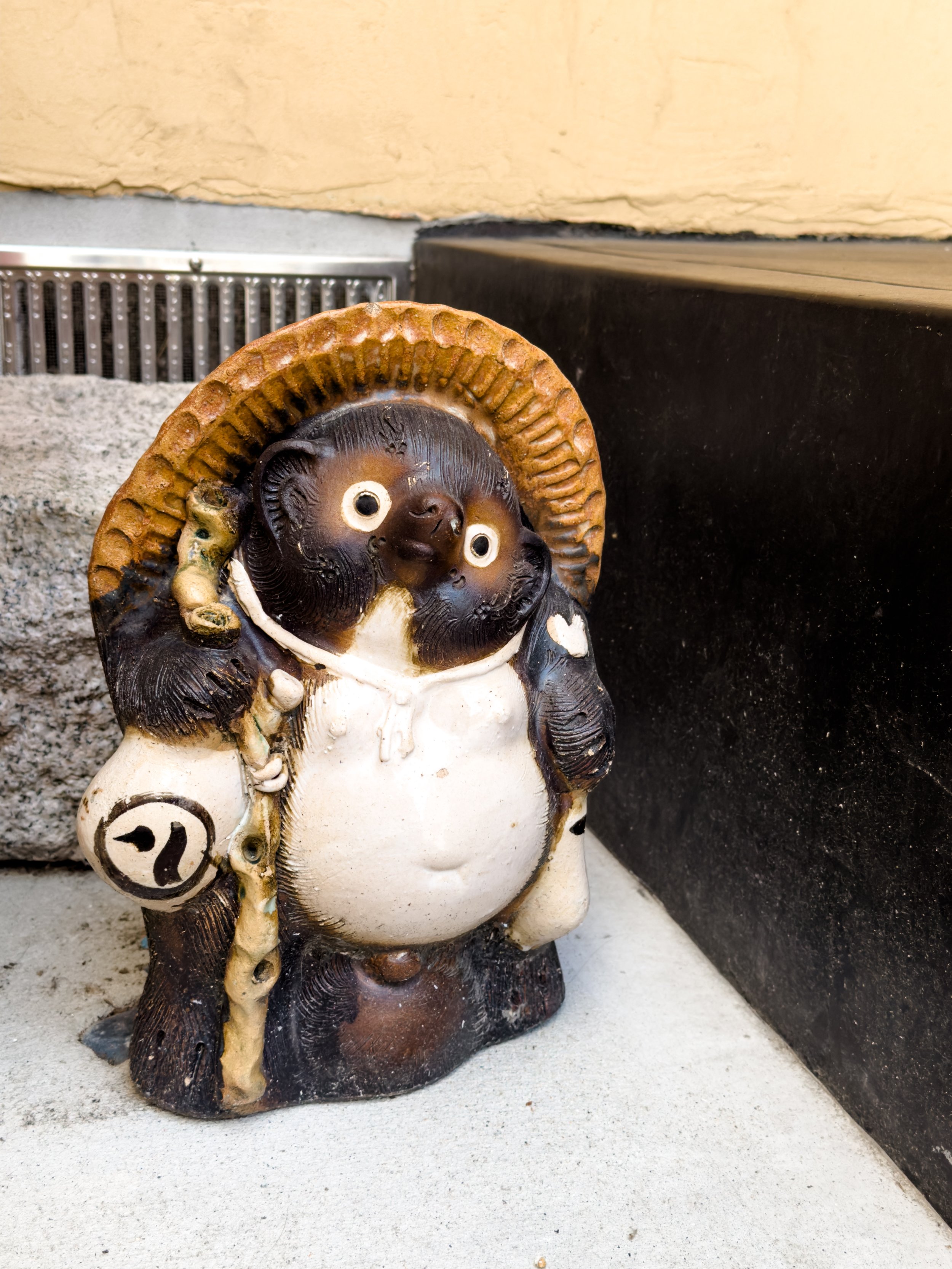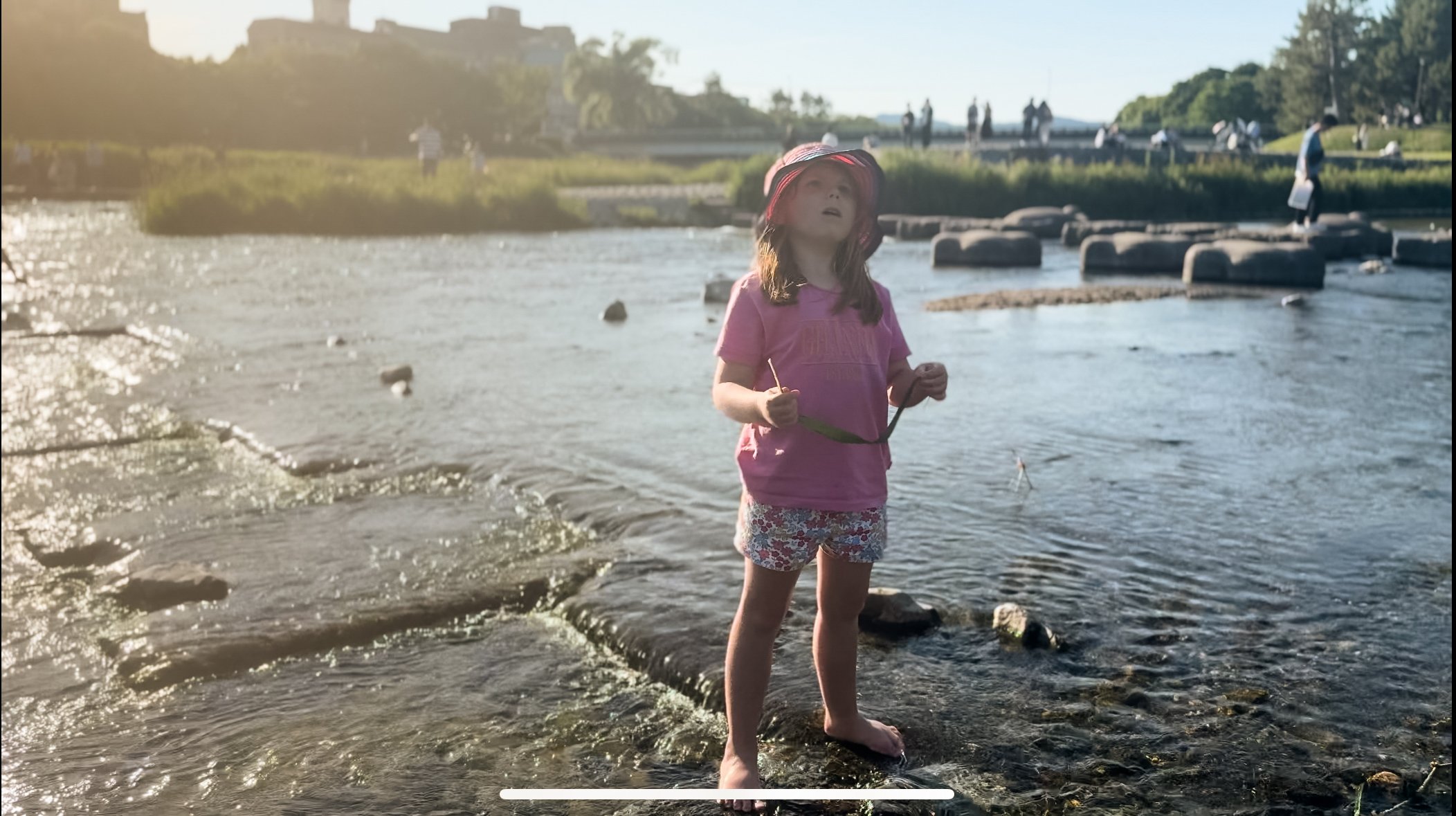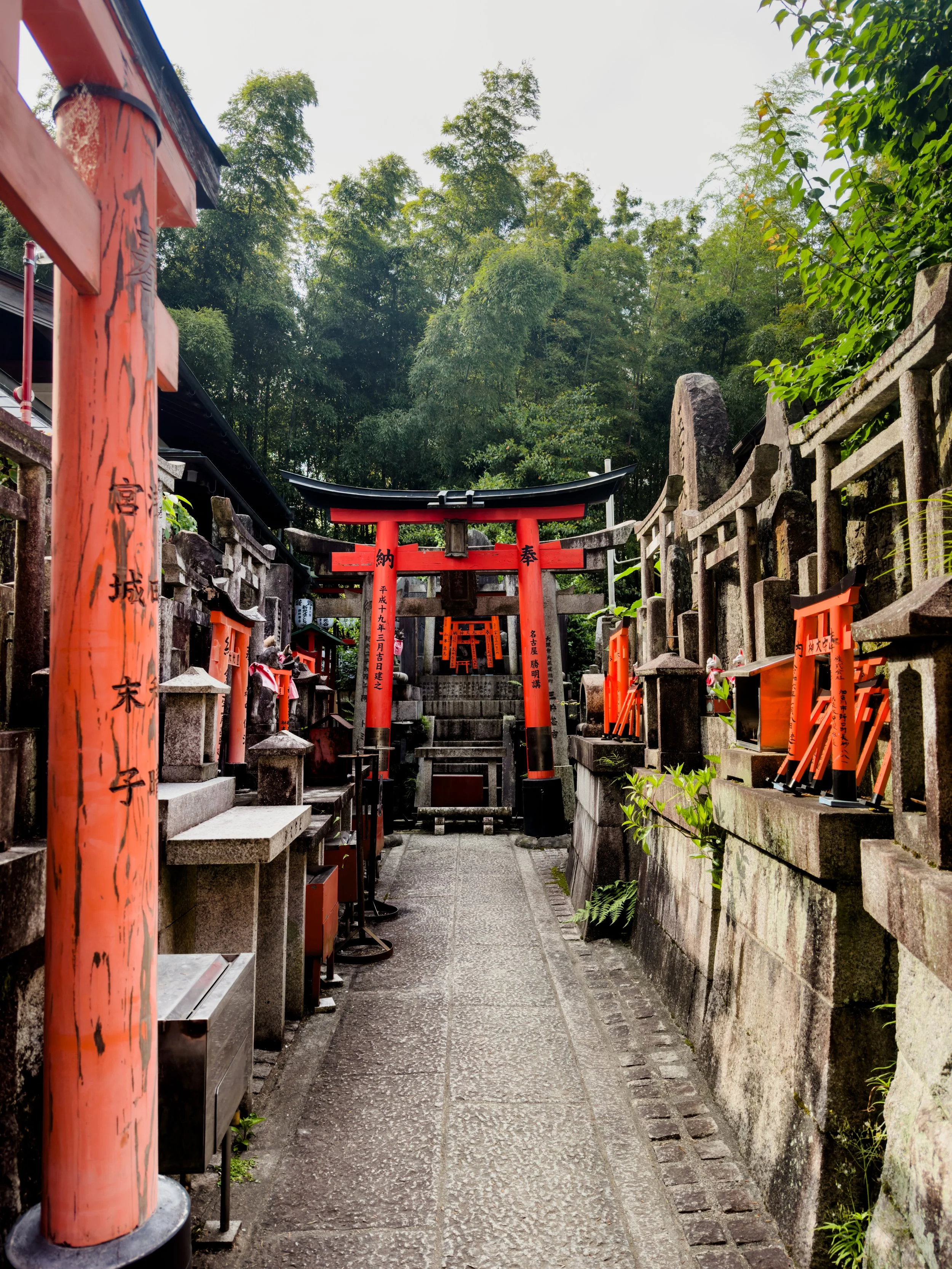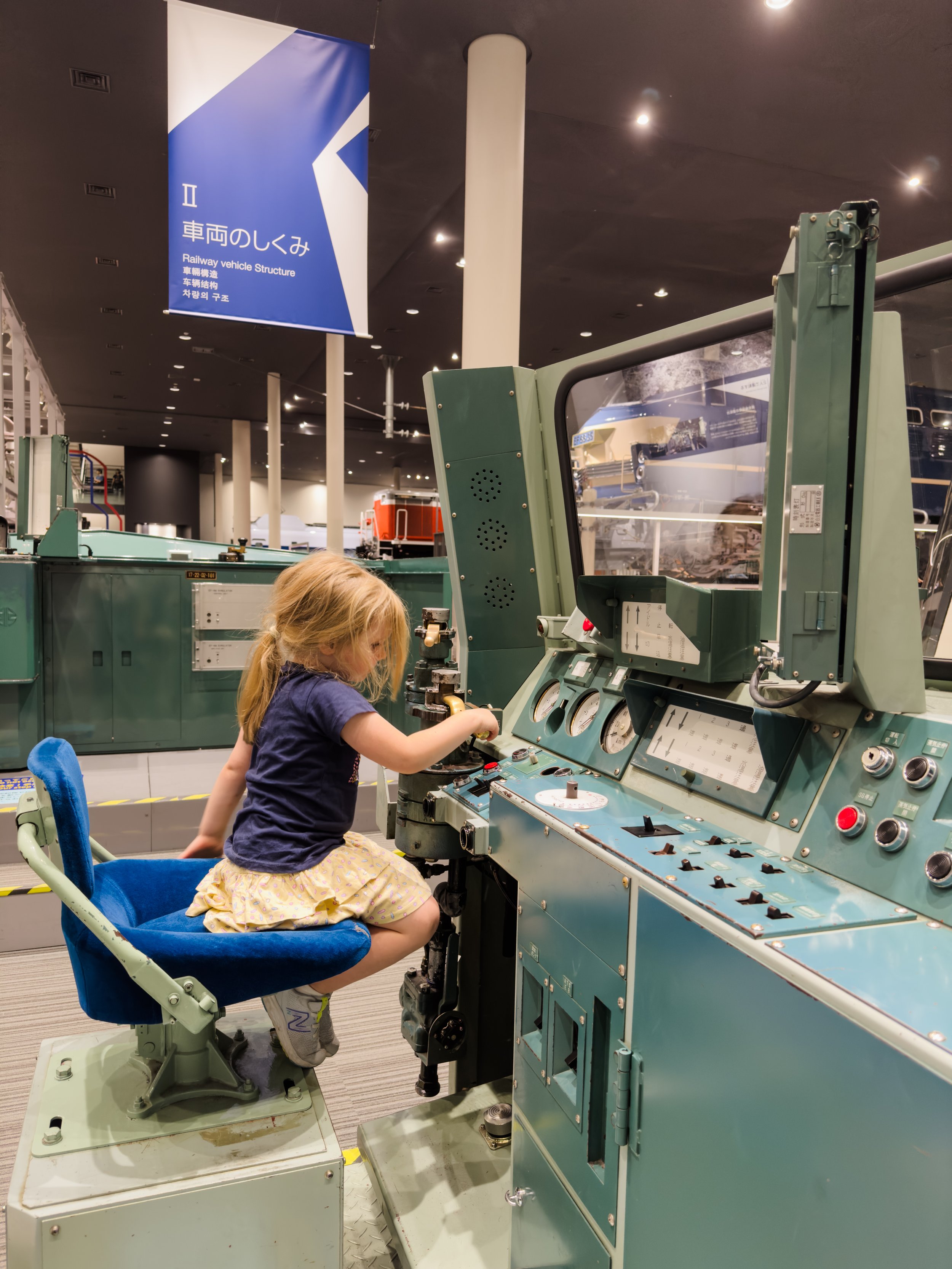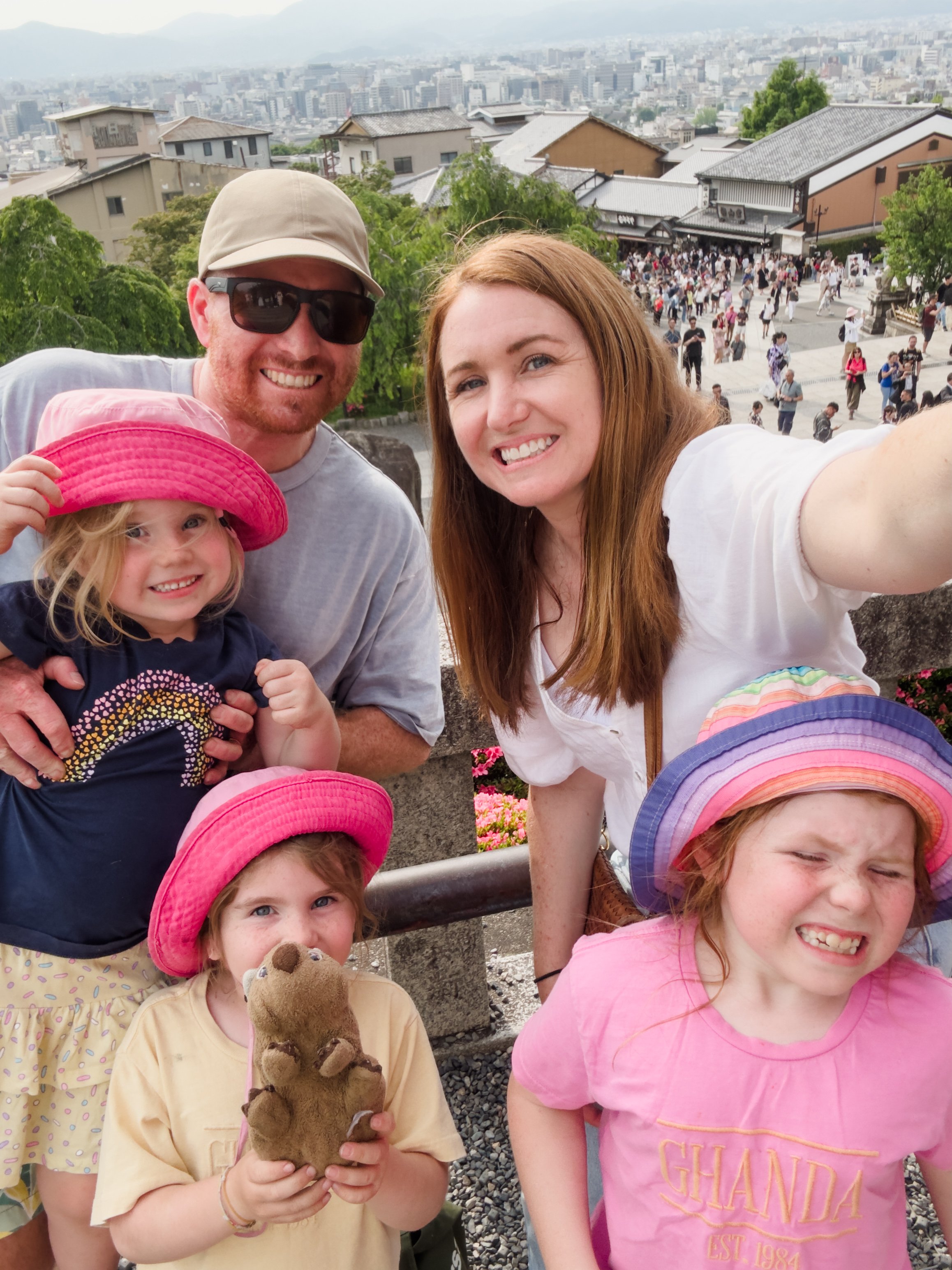This day was very much a rest day where we didn’t plan any extensive outings. We create some time and space for the girls to just play together at the accommodation and then watch a movie while Braino and I sorted out some planning for the upcoming days and washing.
Our guesthouse in Kyoto was a two story apartment / house in the Chayama neighbourhood in the northern part of Kyoto. We booked it through Booking.com although I’m fairly certain it was available through Airbnb too. It was a very authentic Japanese house with a small kitchenette and a lounge area with a small bathroom at the back of the house and a laundry in a very small courtyard that lead out to a back alley.
Upstairs was two room that were only separated by sliding doors and both had traditional tatami mats, which is a like a sturdy woven straw mat, very authentic to Japan. The beds were also very authentic in nature - essentially just thin mattresses on the tatami mats, which could be folded up and stored in cupboards to create more living space during the day. I found the thin mattresses on the floors to be suprisingly comfortable while Braino didn’t. The girls were all in one of the rooms while Braino and I were in the other, but essentiall you could open up the sliding doors to make one big room on the upper level.
It was fairly cozy for a family of five but much better than a hotel room.
Fiona, the owner of the guesthouse, was so friendly and helpful! She was originally from England and lived in Kyoto with her family including two teenage daughters. She was incredibly helpful with restaurant & playground recommendations and luggage forwarding. (More on luggage forwarding later - it’s been amazing option to ditch the two large suitcases)
The guesthouse also had a selection of bikes that we could use, Braino made use of these to ride out to get takeaway and groceries.
Also the weird little bear statue is actally a Tanuki, a native Raccoon Dog that features heavily in Japaness folklore. We saw so many of these statues around Kyoto, in front of houses and shops as it symbolises good luck. The girls love spotting them throughout the neighbourhood.
In the afternoon, we went to explore a local playground that Fiona recommended - Tarakgarike Children’s Playground. It was quite a large park with a playground that appeared to have something for kids of all ages. It was a lovely hot Sunday in Kyoto and there were many families who had set up little tents in the park, probably having spend most of the day there. The girls liked the big slide that was built into a large mound and the maze.
Our guesthouse was very close to the Chayama train station on the Eizan railway line. Tarakgarike Station was a few stops north but afterwards we rode the rail back to the end of the line to Demachiyanagi Station where I had spotted a lot of people out in the parkland near where the river spilts. There was some large stepping stones that crossed the shallow river, including some that been custom made to looks like turtles. The girls loved it here, it was really relaxing just people watching and enjoying the fresh air along with all the locals.
Later the evening, I headed back into the Gion area of Kyoto to capture some photos at dusk. Gion is the iconically authentic, albeit a little touristy area of Kyoto, it’s very photogenic and there was a lot of other photographers out snapping photos from the popular vantage points. I think I arrived a little too late but I was quite happy with what I captured.

